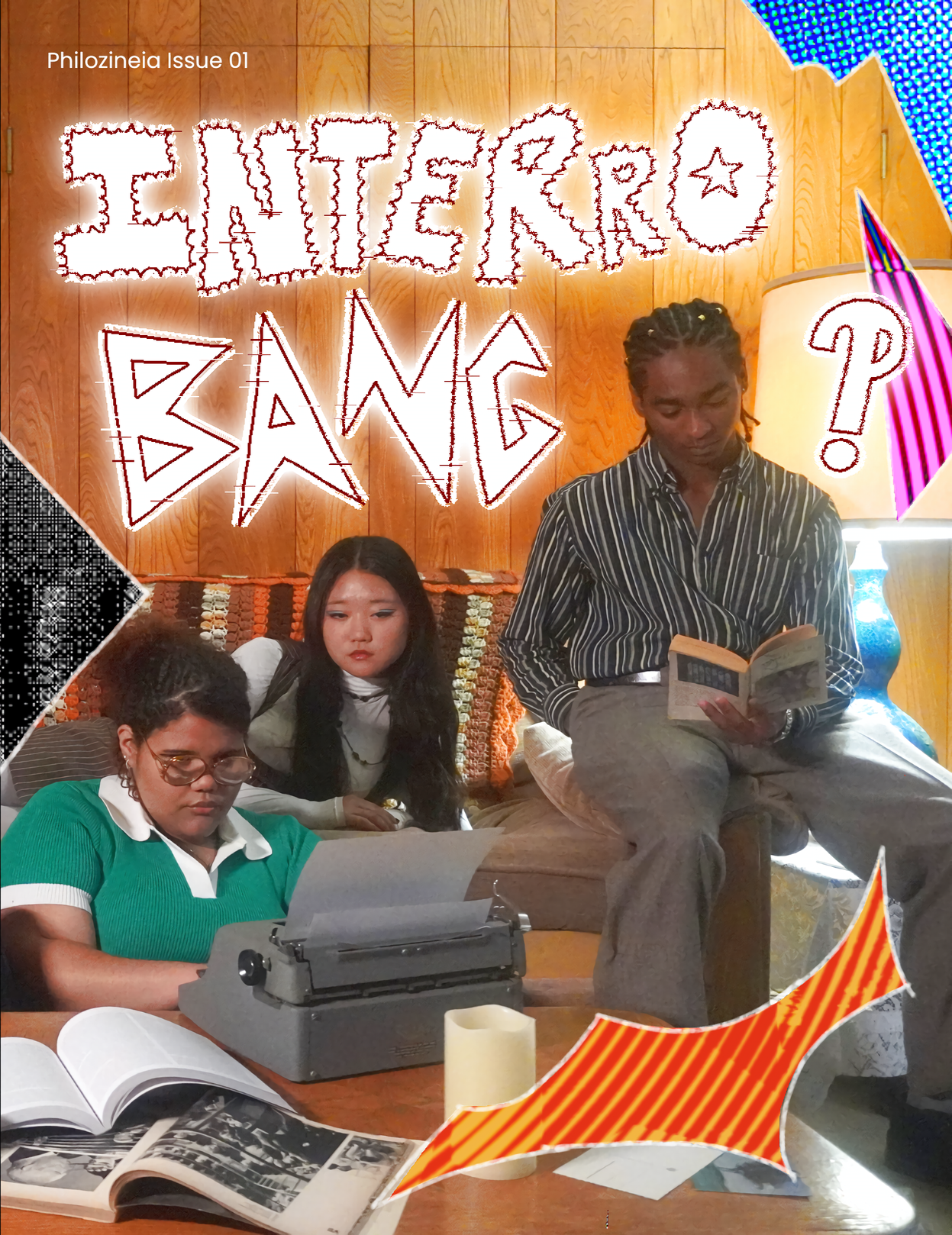 Image 1 of 1
Image 1 of 1


DIGITAL ISSUE | Philozineia Issue 01: Interrobang
In 1962, Martin K. Speckter, a former journalist turned advertising executive, proposed a simple but subversive idea: why use the clunky combination of a question mark and an exclamation point when a single mark could do the job? He called it the interrobang (‽), a punctuation mark designed to capture surprise, disbelief, and rhetorical questioning in one concise symbol.
Philozineia’s first issue, Interrobang, picks up where Speckter left off. Like its namesake, we searched for demonstrations of disruption, experimentation, and rethinking, finding new ways to challenge how ideas take shape.
Eleven teen artists across the globe have taken to interpreting the interrobang for themselves, offering perspectives from Australia to Bosnia and Herzegovina to the U.S. and beyond, each reflecting a range of disciplines and identities. Beyond the printed page, we have also engaged in conversation with five contributors regarding their artistic processes. These interviews examine non-written forms of creation through spoken conversation, a medium that captures substance not only through text but also through voice, inflection, and presence.
Just as the interrobang sought to reshape the standards of typographic language, this zine invites our generation of youth to redefine how we engage with and create art, writing, and culture.
In 1962, Martin K. Speckter, a former journalist turned advertising executive, proposed a simple but subversive idea: why use the clunky combination of a question mark and an exclamation point when a single mark could do the job? He called it the interrobang (‽), a punctuation mark designed to capture surprise, disbelief, and rhetorical questioning in one concise symbol.
Philozineia’s first issue, Interrobang, picks up where Speckter left off. Like its namesake, we searched for demonstrations of disruption, experimentation, and rethinking, finding new ways to challenge how ideas take shape.
Eleven teen artists across the globe have taken to interpreting the interrobang for themselves, offering perspectives from Australia to Bosnia and Herzegovina to the U.S. and beyond, each reflecting a range of disciplines and identities. Beyond the printed page, we have also engaged in conversation with five contributors regarding their artistic processes. These interviews examine non-written forms of creation through spoken conversation, a medium that captures substance not only through text but also through voice, inflection, and presence.
Just as the interrobang sought to reshape the standards of typographic language, this zine invites our generation of youth to redefine how we engage with and create art, writing, and culture.
